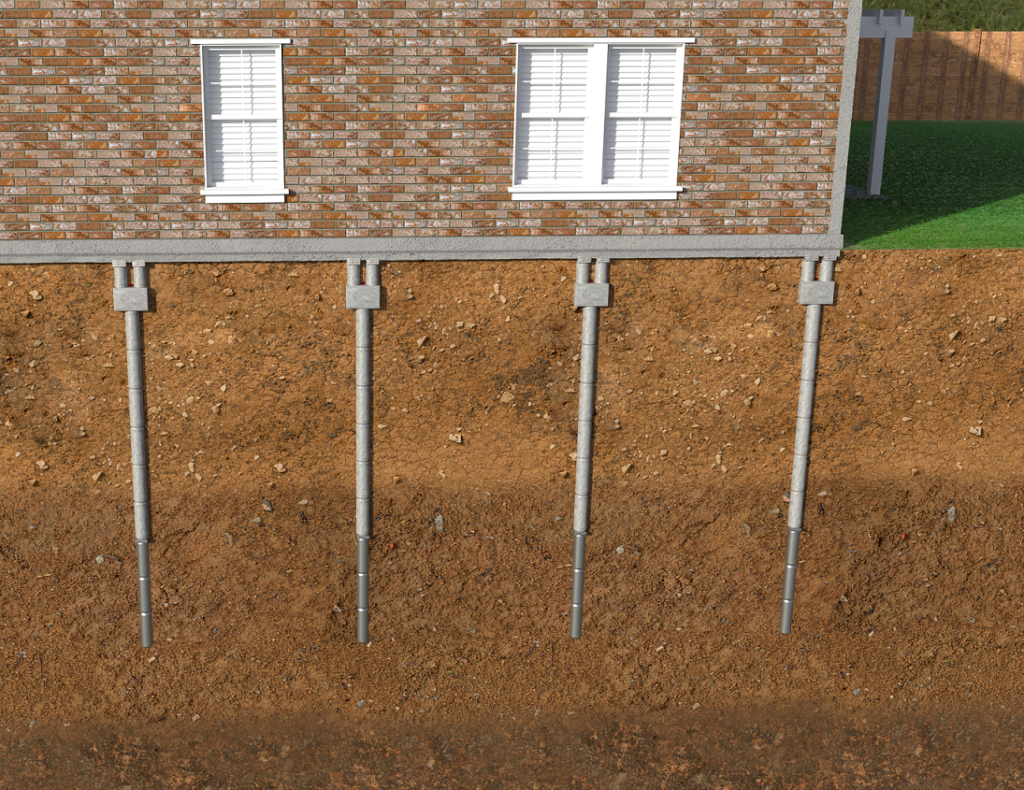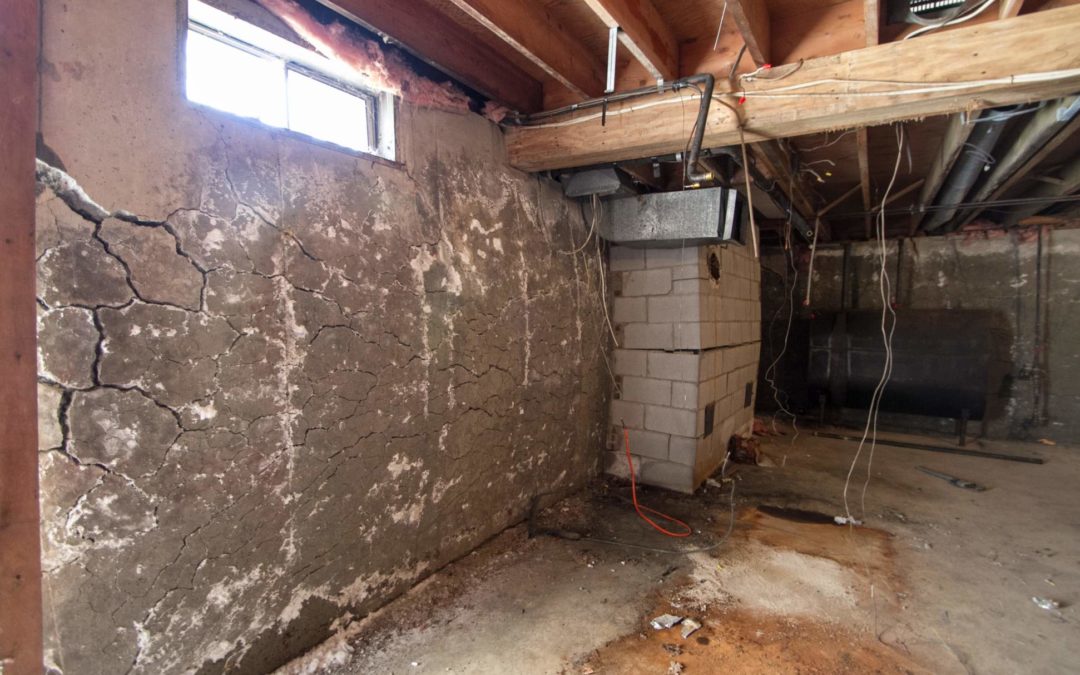The Ultimate Solutions for Foundation Repair Oklahoma City: Specialist Insights
Wiki Article
Exploring Different Approaches of Structure Repair Work for Various Dirt Kinds
Structure repair work is an essential aspect of preserving architectural honesty, specifically when considering the diverse difficulties presented by various dirt kinds. The intricacy of dirt actions under varying conditions necessitates a tailored technique to fix, making sure optimum remedies such as helical piers for unstable dirts or chemical cements for natural layers.Recognizing Dirt Kinds
Dirt kinds play an important function in the stability and durability of building structures, making it essential for homeowners and construction specialists to comprehend their attributes and habits. The interaction in between dirt and foundation can determine the architectural stability of a building. There are several dirt types, each with distinct physical properties that influence exactly how foundations are made and kept.Granular dirts, such as sand and gravel, give great drain and are often taken into consideration steady. They have high load-bearing capacities, which can sustain heavier frameworks. These dirts can move if not compressed correctly, leading to potential settlement concerns. On the other hand, natural soils like silts and clays show different actions. These dirts tend to preserve wetness, and their load-bearing ability can vary significantly with adjustments in moisture material.
Rocky dirts, understood for their stamina and stability, deal outstanding assistance for structures but may need customized tools for excavation. Conversely, loamy dirts, which are a well balanced mixture of clay, sand, and silt, frequently supply desirable problems for structure support as a result of their moderate drainage properties.

Understanding these dirt kinds is vital for choosing suitable structure fixing techniques, guaranteeing the resilience and safety of frameworks gradually.
Challenges With Expansive Clay
Amongst the different dirt kinds, expansive clay offers special challenges for structure stability due to its tendency to undergo substantial volume adjustments with wetness variation. This kind of soil swells when damp and contracts when completely dry, which can exert substantial pressure on frameworks. These changes can lead to foundation cracking, heaving, and settlement concerns, presenting substantial dangers to the architectural stability of structures.The difficulties with large clay are worsened by its plasticity index, which gauges the soil's capacity to change shape and quantity. A high plasticity index indicates higher potential for motion, raising the possibility of damages to structures. This is especially bothersome in regions experiencing severe or frequent weather condition adjustments, where cycles of wet and dry problems are common.
Additionally, the deepness of expansive clay layers can vary, making complex the analysis and planning of suitable structure fixing methods. The unforeseeable nature of its activity demands specialized engineering services to alleviate threats. Additionally, extensive clay can influence energy driveways, lines, and pathways, better complicating repair efforts. These complexities need a detailed geotechnical evaluation to ensure effective foundation repair work techniques are carried out, highlighting the value of attending to large clay obstacles with expertise and treatment.
Solutions for Sandy Soils
Sandy dirts, defined by their large fragment dimension and low communication, existing unique challenges for structure stability due to their tendency for shifting and disintegration. These buildings require specialized foundation repair methods to guarantee architectural stability. One efficient solution is the usage of deep foundation systems such as helical piers or driven piles. By securing the foundation to much deeper, more secure soil layers, these systems can give the needed support to neutralize the shifting nature of sandy dirts.An additional suggested strategy is the application of soil stablizing techniques. Chemical grouting, for example, entails injecting a supporting representative right into the dirt, which improves communication and decreases permeability. This procedure aids to solidify the sandy substrate, consequently decreasing the risk of erosion and motion.
In addition, installing appropriate drain systems is crucial in sandy soil conditions. Making certain adequate drainage can avoid water build-up around the structure, which usually exacerbates erosion and soil displacement. Techniques such as French drains or surface grading can be utilized to guide water away from the building boundary.
Attending To Resolving in Loamy Soils
Fertile dirts, recognized for their well balanced mix of sand, clay, and silt, provide a productive base for numerous structures but can in some cases cause foundation settling because of their distinct structure. This balanced texture offers outstanding drainage and nutrient retention, making it perfect for agriculture and landscaping. This same characteristic can become bothersome for structures, as shifts in moisture web content can create the soil to expand or agreement, leading to clearing up.Accurate dirt screening is essential to establish the specific structure and dampness content of the loam. Once information is collected, implementing appropriate water drainage solutions is vital to keep regular moisture levels, consequently lowering the threat of soil contraction or growth.

Innovative Repair Service Methods
In the world of structure repair, cutting-edge methods are continually being created to deal with the complex tests posed by different soil problems. As soil kinds differ substantially in their structural properties, standard methods might not constantly are enough. The advent of new modern technologies in foundation repair service provides a lot more tailored services, making certain stability and durability.One notable development is the usage of helical piers, which are particularly efficient in extensive or unpredictable soils (foundation repair okc). These piers are screwed into the ground up until they get to a secure layer of soil, providing solid assistance for the foundation above. This approach reduces disturbance and is versatile to different soil types, making it foundation repair Oklahoma a flexible remedy
Another cutting-edge method is the application of polyurethane foam shot. This approach involves injecting high-density polyurethane foam below the foundation to fill up gaps and maintain the structure. It is a less invasive alternative to conventional support, offering quick installation with minimal disturbance to the surrounding area.
Furthermore, soil stabilization methods, such as making use of chemical grouts, have acquired traction. These compounds enhance soil strength and reduce permeability, preventing future shifting. Collectively, these innovative repair techniques offer effective solutions for the diverse challenges postured by differing dirt problems.
Verdict

Foundation repair is an important aspect of maintaining structural stability, specifically when considering the diverse difficulties presented by various dirt types (foundation repair Oklahoma). The complexity of soil habits under varying problems requires a customized technique to fix, making certain optimum remedies such as helical piers for unstable dirts or chemical cements for natural layers. By securing the foundation to deeper, much more steady dirt layers, these systems can supply the essential assistance to counteract the shifting nature of sandy soils
Foundation repair work needs careful consideration of soil kinds to ensure stability and long life. Chemical grouts boost dirt stamina and decrease permeability in cohesive dirts.
Report this wiki page